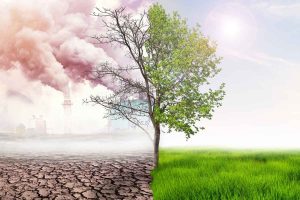
Trees and vegetation benefits. Trees improve human health in a number of ways, just as they assist entire ecosystems by stabilizing soils, offering abundant habitat for wildlife, absorbing and filtering stormwater, lowering temperatures, and more. It is impossible to overestimate the benefits of living close to trees, from the medical trees that human societies have used for hundreds of years to provide life-saving medicine to the urban trees that protect city people from dangerously high temperatures.
TREES AND VEGETATION BENEFITS
You could say that trees are ingrained in our basic identity because it is evident from historical documents that early humans depended on them for survival. We find protection as they absorb dangerous pollutants, healing in their medicinal ingredients, shelter in their limbs, and sustenance in their nutrient-rich fruits.
1. Air pollution is eliminated by trees

An estimated 711,000 metric tons of air pollutants are eliminated annually by urban trees in the contiguous United States. This is significant because a variety of human health conditions, such as bronchitic symptoms, an increased risk of glaucoma, heart attacks, altered vascular function, autism, high blood pressure, problems with children’s cognitive development, heart failure, and an increased mortality rate, are linked to air pollution in the form of particulate matter (such as ozone, carbon monoxide, nitrogen dioxide, sulfur dioxide, and polycyclic aromatic hydrocarbons).
2. Trees Encourage a Robust Economy
A robust local economy increases access to essential, life-saving resources like fresh, nutritious food and quality healthcare and services, even though it may seem paradoxical to mention the economy among the health benefits of trees. Trees only increase in value as they become older, raising property values as they do, but infrastructure deteriorates over time. Stronger neighborhoods and more active communities that feel safe and inspire people to come outside are the results of higher property prices!
3. Diminish the Impact of the Urban Heat Island

One of the biggest risks to human health in a warming environment is the rise in heat and heat-related illnesses. In cities, where heat waves and the Urban Heat Island effect combine to produce hazardous temperature surges, this is particularly common. Planting strategically placed urban trees can help urban residents feel less hot. Trees significantly affect temperature, contributing an average of 1.9°C of cooling to cities, according to a study of 94 urban areas worldwide. Indeed, they have the ability to lower temperatures by as much as 9°C, which is significant in regions where temperatures frequently surpass 100°F.
4. Assist Us in Recovering from Illness
Hospital patients who have a view of trees can recuperate more quickly since it lowers tension and diastolic blood pressure. Actually, studies have shown that spending just three to five minutes in nature can induce calm and assist lower feelings of discomfort, anxiety, and rage. Our immune system can be weakened by excessive stress, which is known to have a significant impact on our general health and ability to heal. Not surprisingly, then, spending time in nature—or even just gazing at it—can shorten the time it takes for patients to recover.
5. Boost Our Heart Health

People who live in neighborhoods with trees report feeling better and experiencing fewer cardio-metabolic disorders than people who live in less green places. The stress-relieving qualities of trees and the fact that frequent exposure to them tends to promote more frequent outdoor physical exercise are some of the reasons behind this. All of which support the health and strength of our hearts.
Summary
Throughout our lives, trees have been a part of our surroundings. They serve as the backdrop for a treasured memory and that pleasant green patch that our eyes seek out when we look out our windows. Despite being motionless and silent, trees have a lot of power, including the ability to improve and improve the health of everyone.